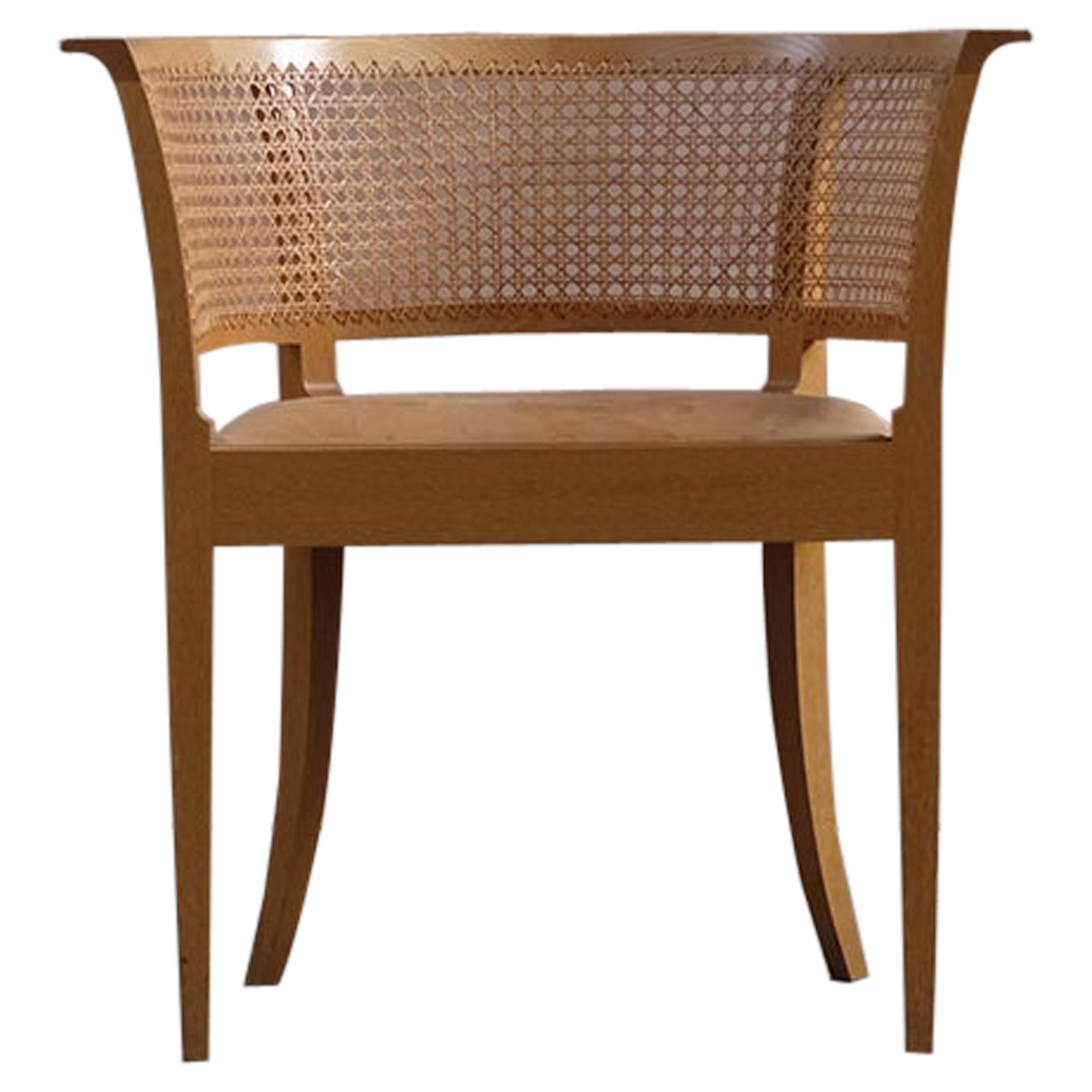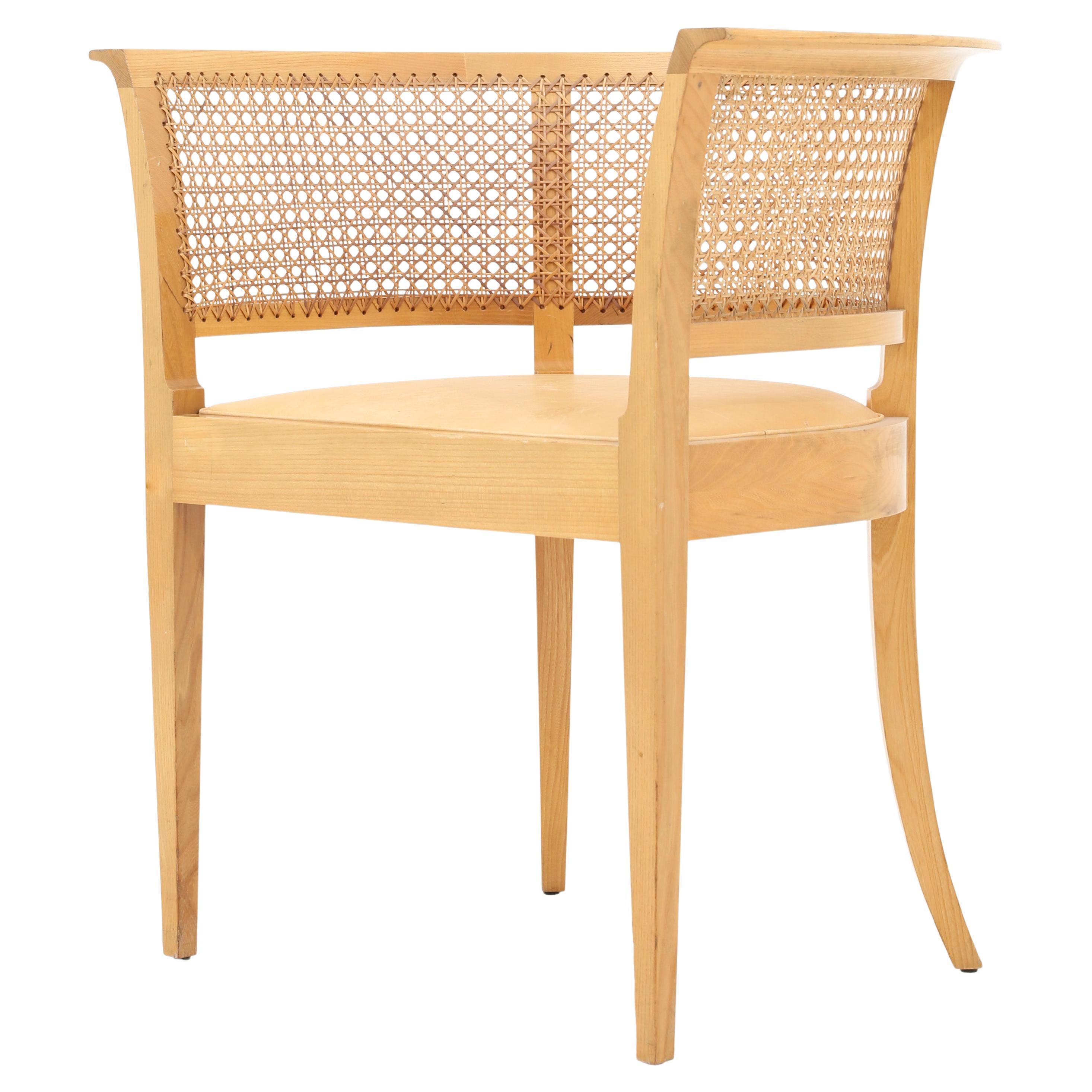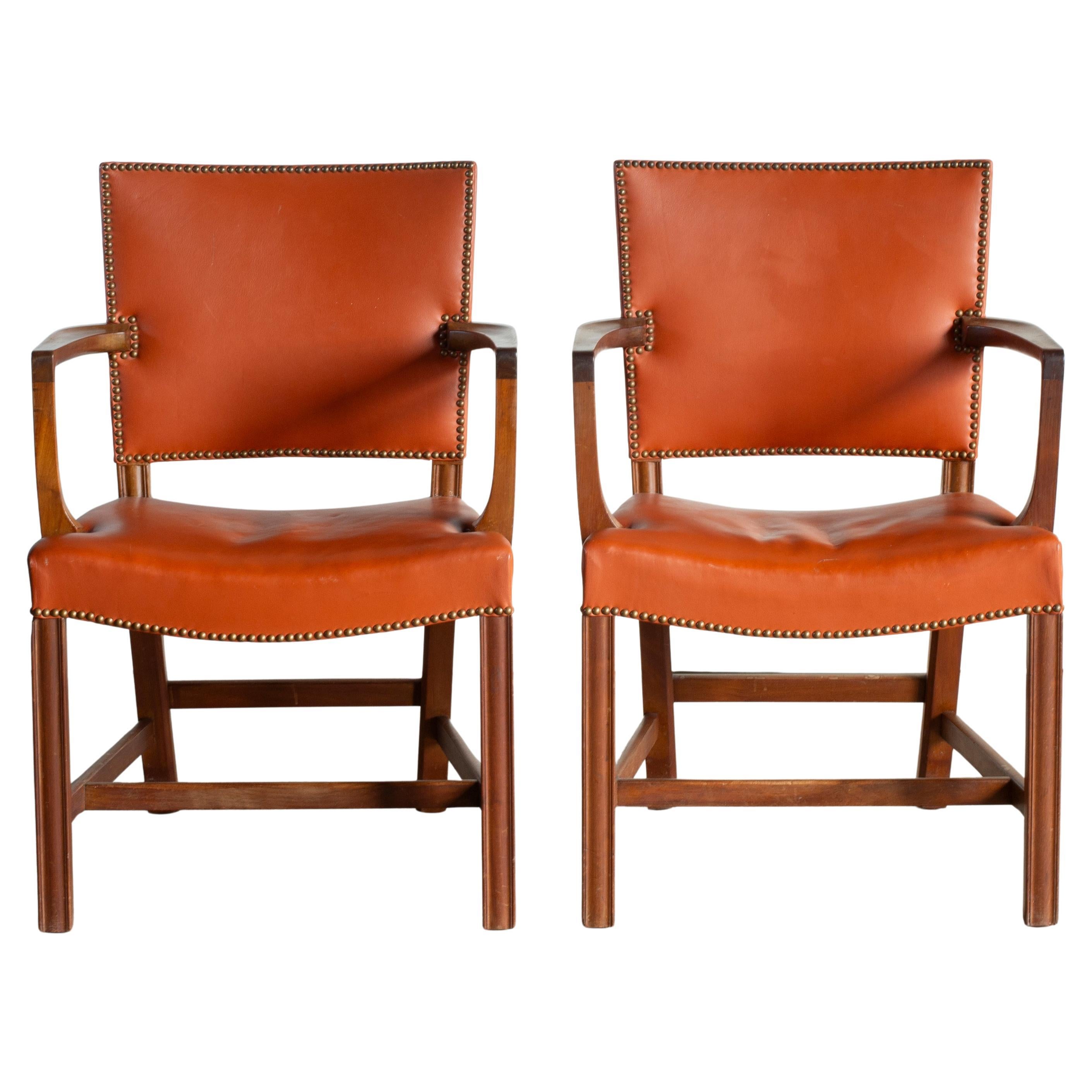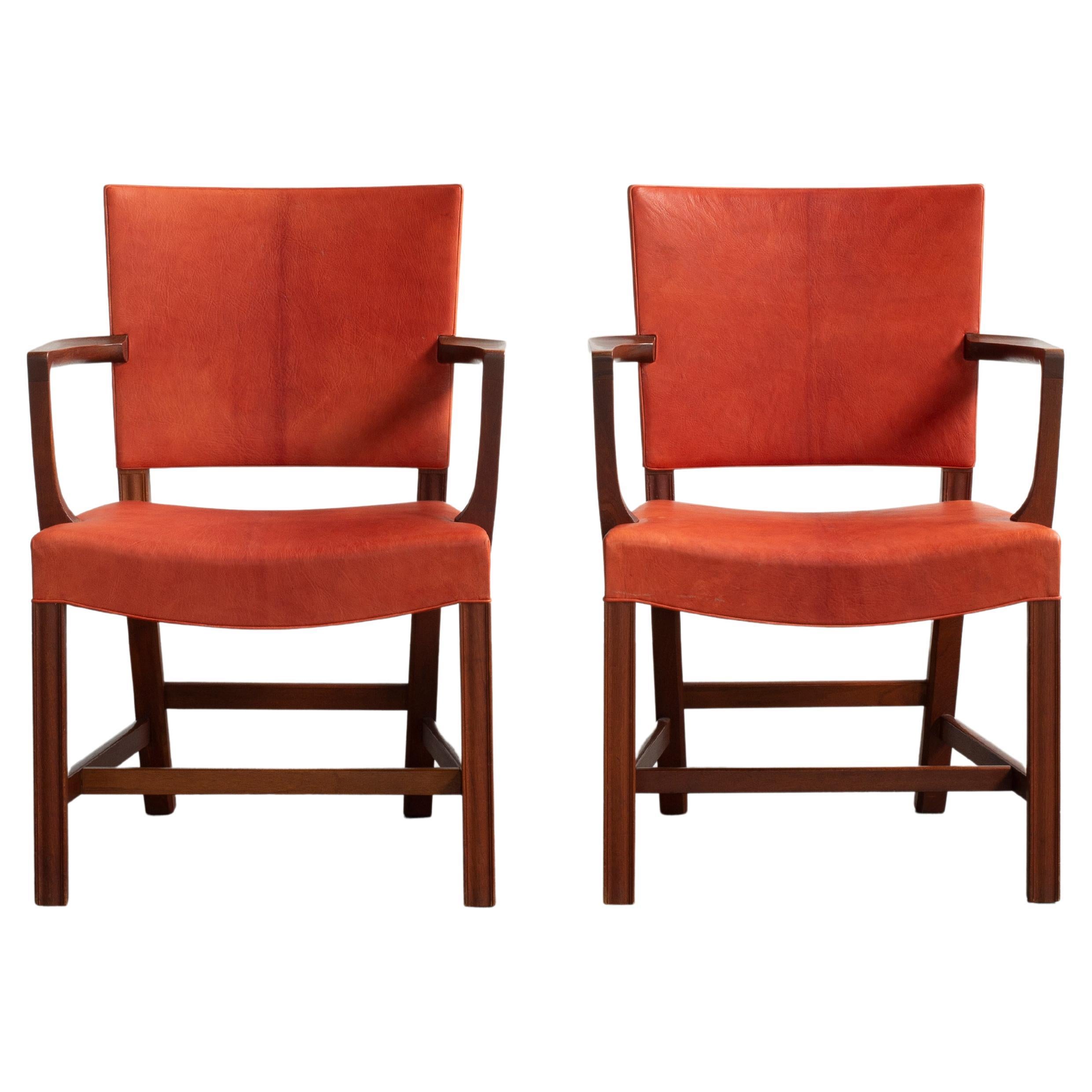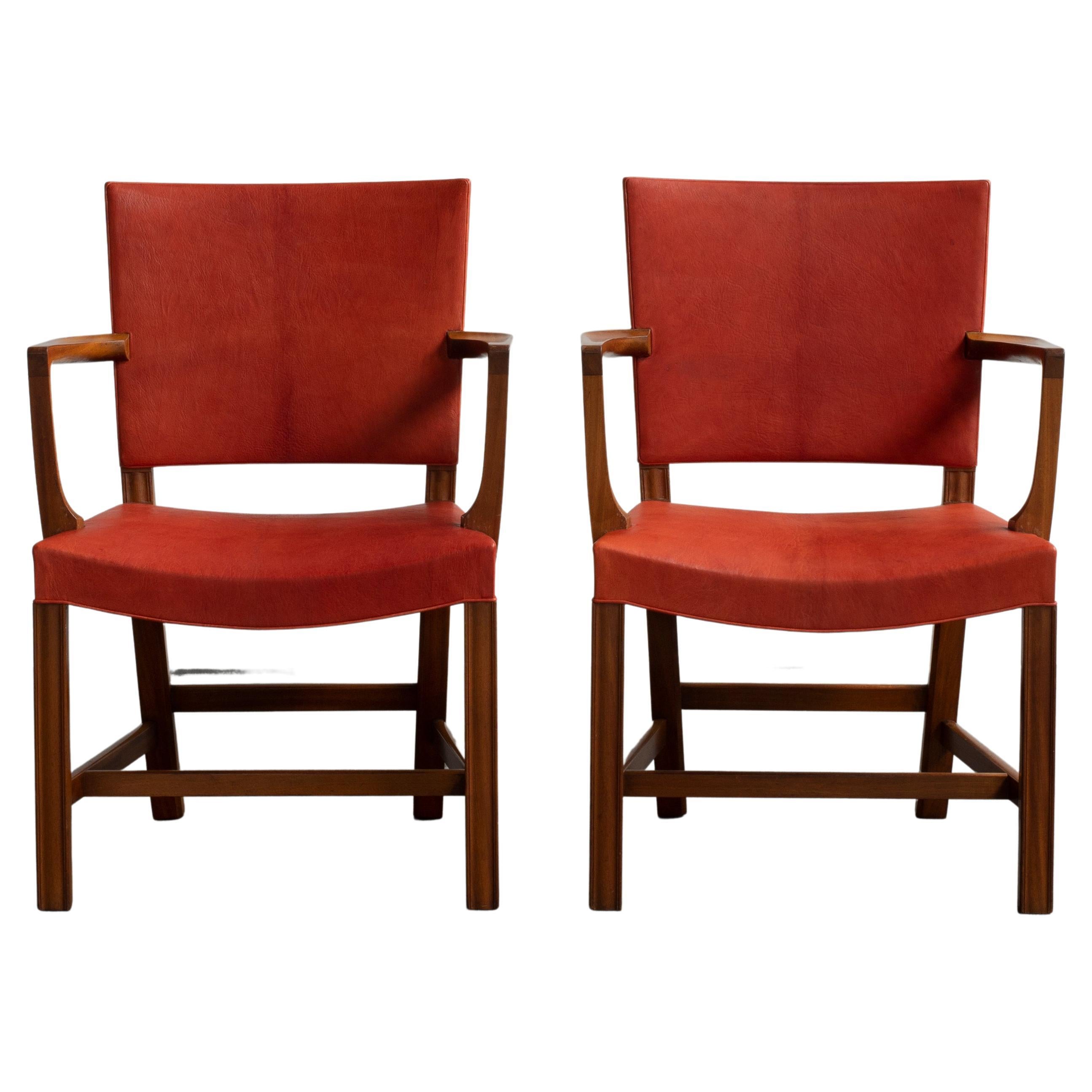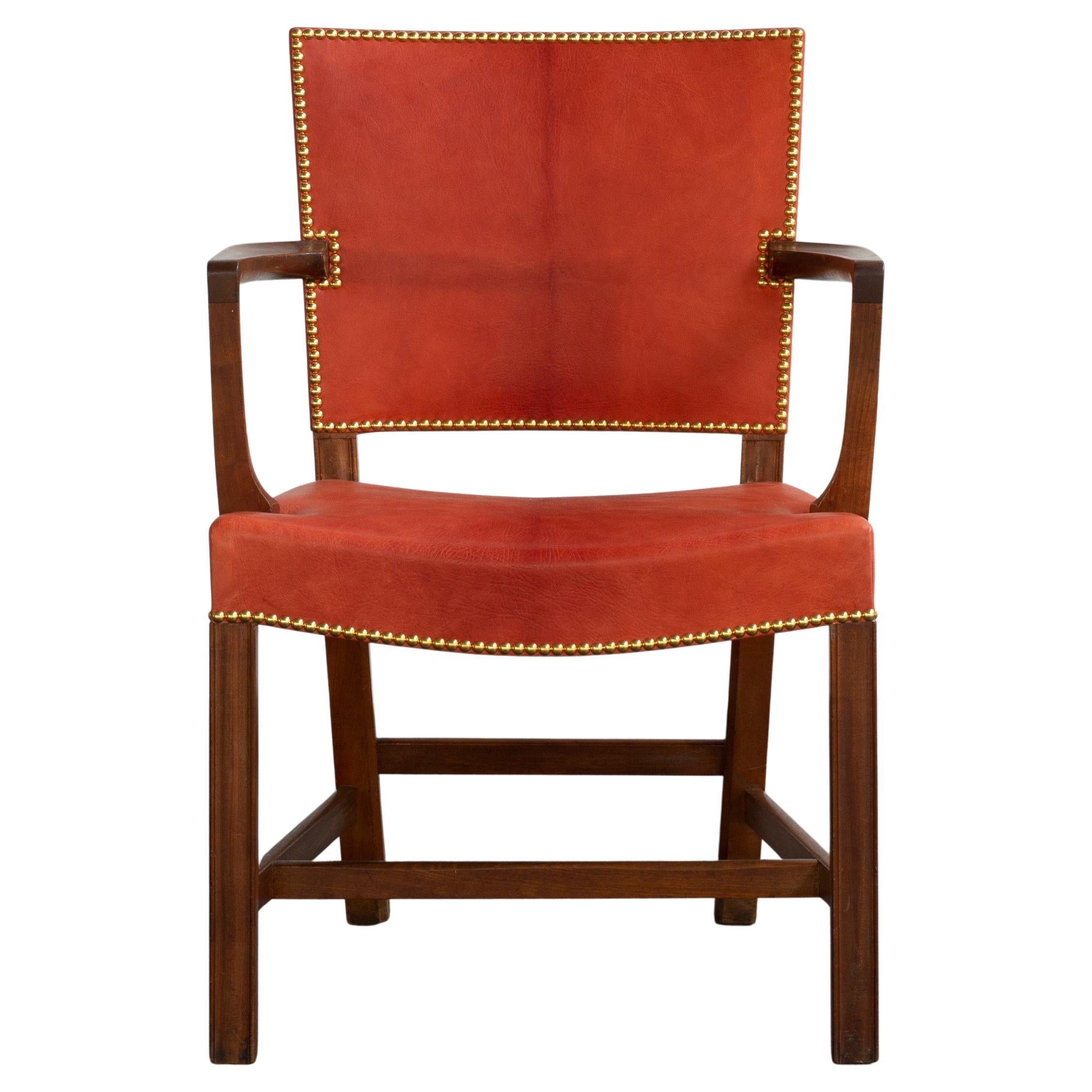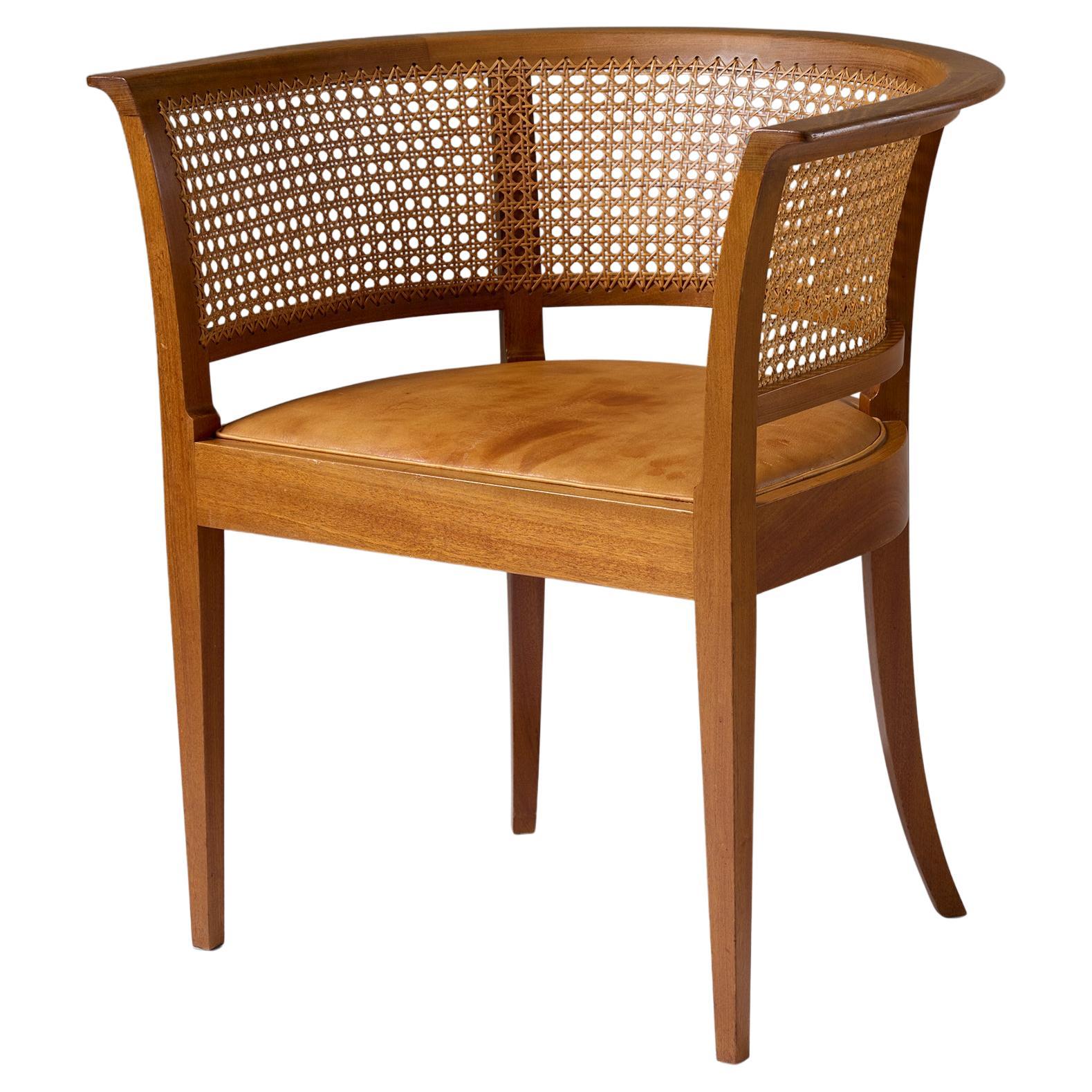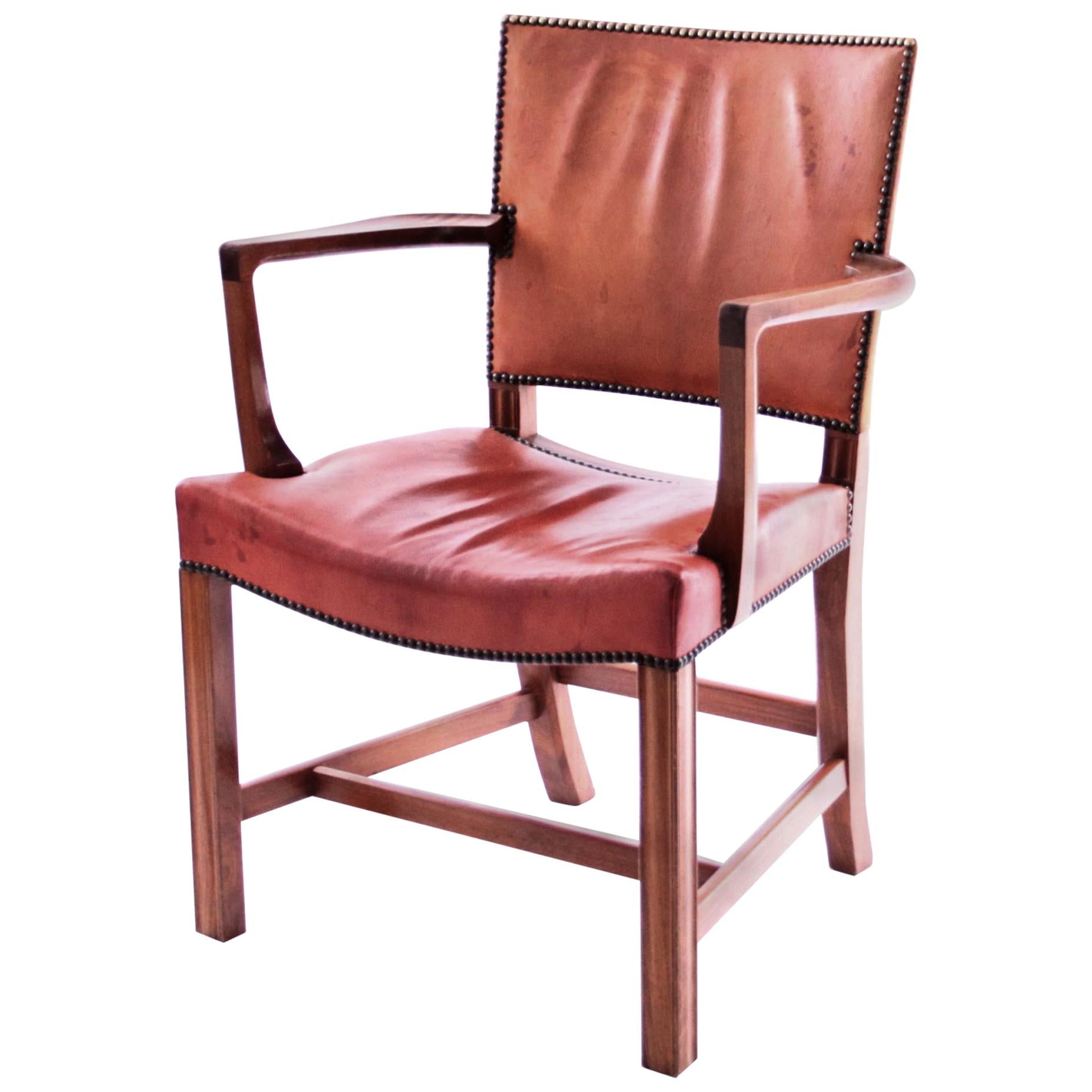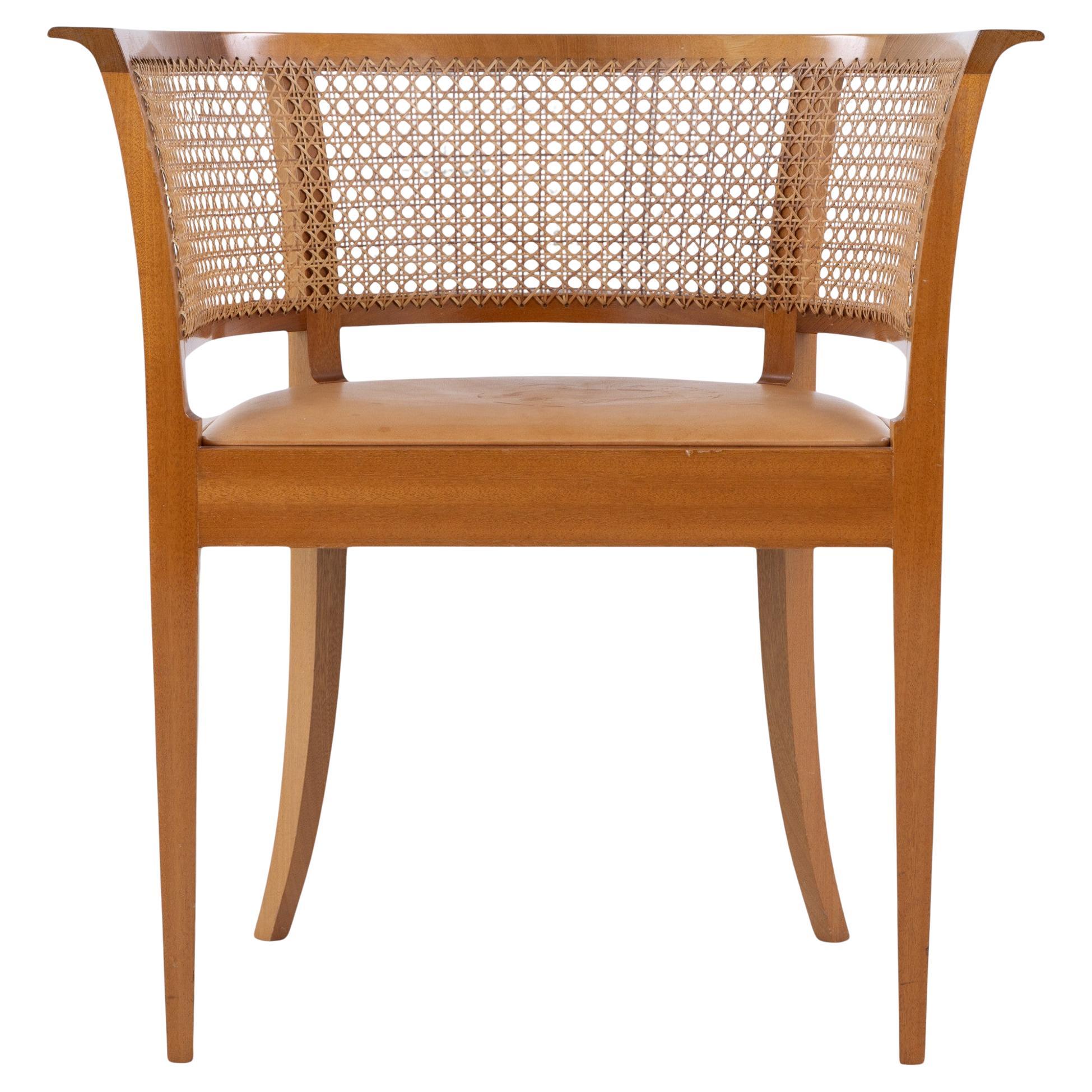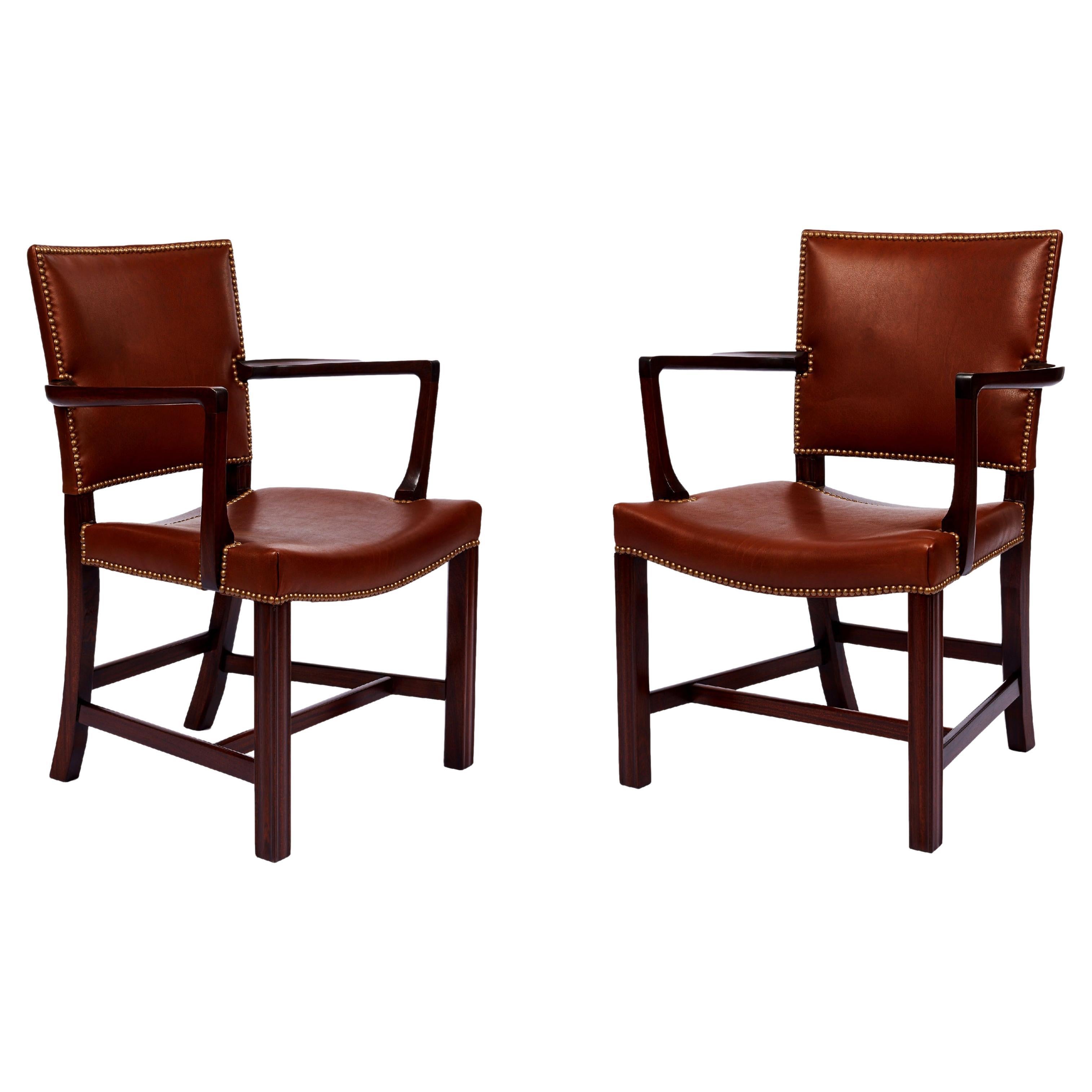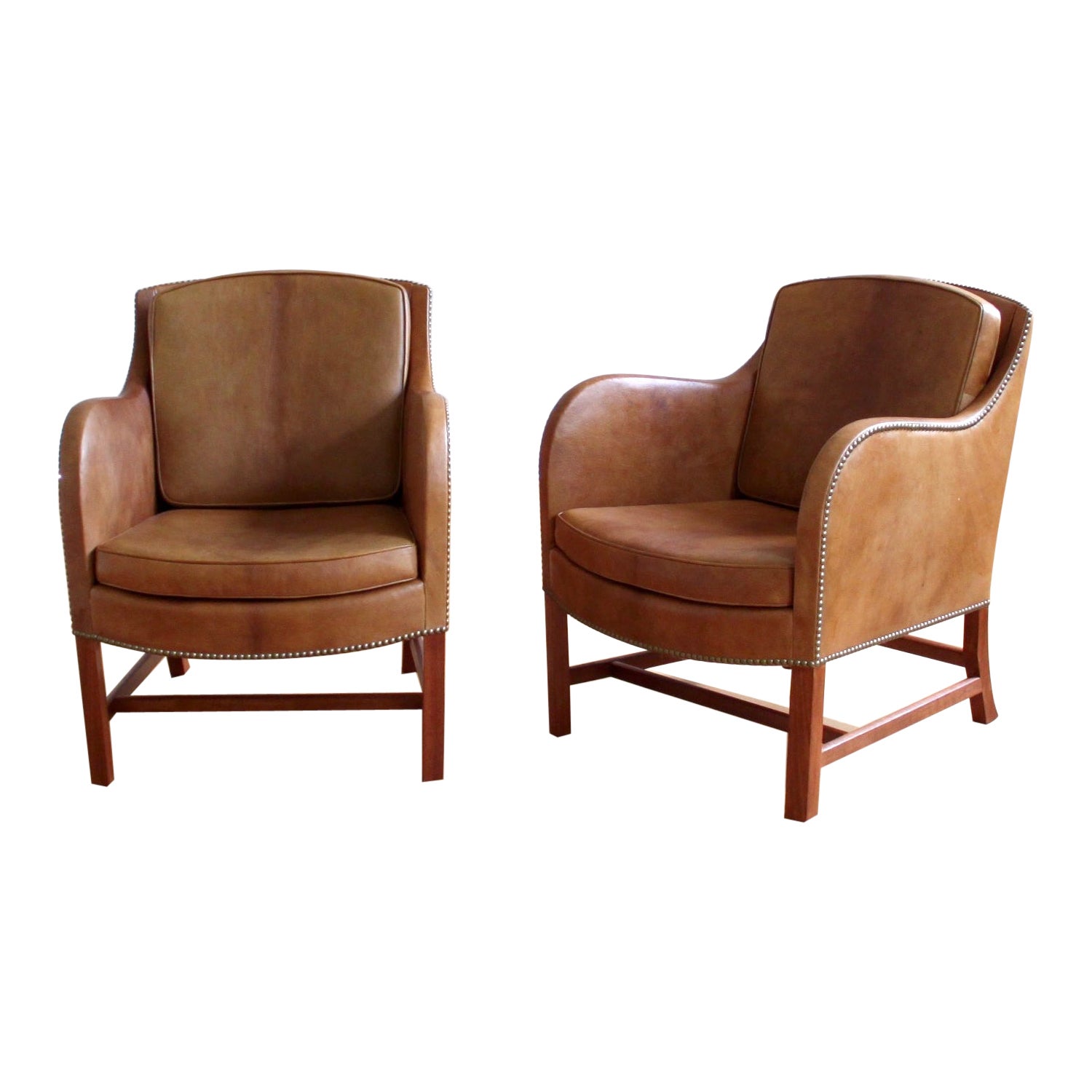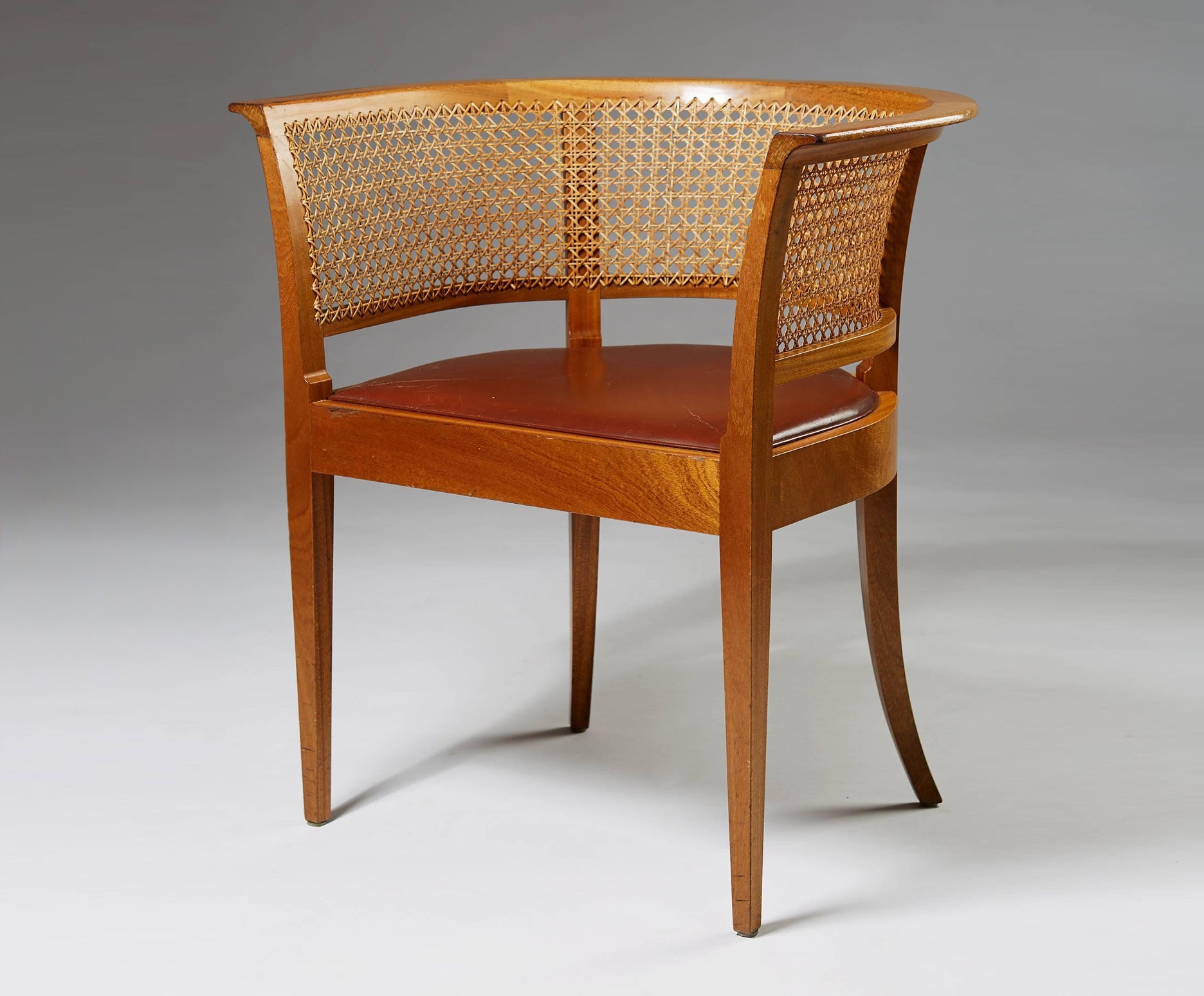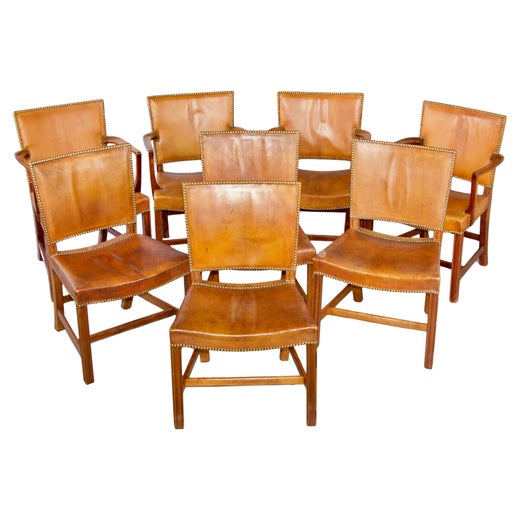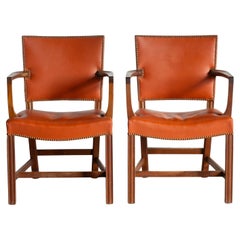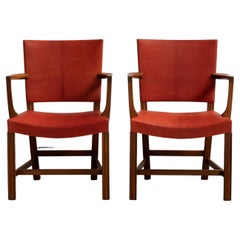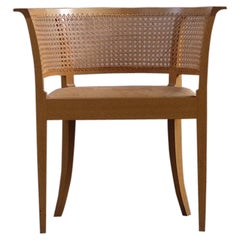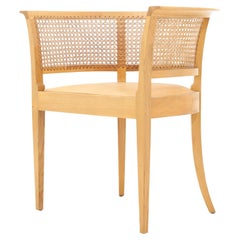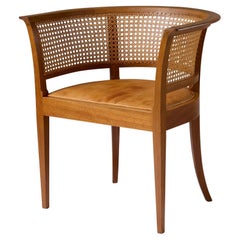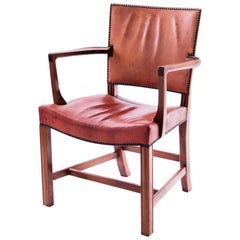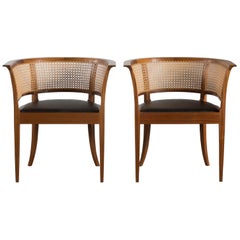
Kaare Klint The Faaborg Chair of Mahogany
View Similar Items
Kaare Klint The Faaborg Chair of Mahogany
About the Item
- Creator:Kaare Klint (Designer),Rud Rasmussen (Cabinetmaker)
- Design:
- Dimensions:Height: 28.75 in (73 cm)Width: 27.56 in (70 cm)Depth: 21.66 in (55 cm)Seat Height: 17.33 in (44 cm)
- Sold As:Set of 2
- Style:Scandinavian Modern (Of the Period)
- Materials and Techniques:
- Place of Origin:
- Period:
- Date of Manufacture:circa 1970s
- Condition:Wear consistent with age and use.
- Seller Location:Copenhagen, DK
- Reference Number:1stDibs: LU2032316787492
Faaborg Chair
A bridge between classical furniture and functionalism that ushered in Danish modern design, the 1915 Faaborg chair was the first major work by Kaare Klint (1888–1954). The chair, which was created for Denmark’s Faaborg Museum, typified the marriage of practicality and form that would come to occupy Klint’s modernist peers. The design combined old world materials and craftsmanship with a pared-down, simple approach. Klint was tasked with producing a light chair that could be moved around by museum visitors and placed in front of paintings. With the Faaborg, the Copenhagen-born designer did exactly that, and his striking work garnered immediate international recognition.
The son of prominent architect Peder Vilhelm Jensen-Klint, Kaare Klint apprenticed as an architect for his father but eventually turned to furniture, later working with cabinetmakers at his own design firm. A known perfectionist, Klint focused on the interrelationship between people and furniture. He was deeply invested in creating furniture that responded to the movements of the human body and applied a knowledge of mathematics to his work. As a professor at the Royal Danish Academy of Fine Arts beginning in the mid-1920s, Klint helped establish the Furniture and Spatial Design department at the school, and taught generations of students who would go on to significantly impact the field, among them Poul Kjaerholm, Ole Wanscher and others.
Klint’s Faaborg chair was simple and rigorous, taking cues from Greek and Roman forms while dispensing with extraneous lines and detail. Originally manufactured by Rud. Rasmussen, it is currently produced by Carl Hansen. Wholly modern but openly reverent of an earlier era, this piece is portable and stable, with curved back legs and a round back borne out of Klint’s distinctive mathematical problem-solving framework.
Kaare Klint
Architect, teacher and furniture designer Kaare Klint is among the most important figures in Scandinavian modernism. Widely recognized as the father of modern Danish furniture, Klint sought to pay homage to historical furniture styles and prized functionality as essential to designing for modern living. He established the design school at Copenhagen’s Royal Danish Academy of Fine Arts, and his students became mid-century legends of cabinetry and furniture-making.
Klint prioritized functionalism and drew on an array of influences in his own work. Furniture experts will observe the influence of 18th-century English seating in his Red chair, while Klint’s iconic Safari chair had roots in campaign furniture. The other exemplary chairs, sofas and tables for which he is known bear the mark of Thomas Chippendale and Biedermeier furniture as well as Greek and Roman forms.
Klint's father was Peder Vilhelm Jensen-Klint, a formidable architect of his day. The younger Klint initially followed in his father’s footsteps, studying under him as well as distinguished architect Carl Petersen. Alongside Danish architect Ivar Bentsen, he headed the renovation of the Designmuseum Denmark in Copenhagen from 1920–26 (Klint also furnished the institution as part of the project). Around the same time, Klint helped found the furniture design school at the Royal Danish Academy. The impact of his role as an instructor there cannot be overstated — he mentored such esteemed cabinetmakers and furniture designers as Børge Mogensen, Hans Wegner and Ole Wanscher.
A prominent advocate of ergonomics, Klint valued comfort and functionality over style. Painstaking research went into each piece of sophisticated yet wholly unadorned furniture he designed, as he endeavored to build structures that took into consideration human proportions and scale. And like the Shakers, Klint believed that quality craftsmanship and good materials were integral to the design of durable furniture that was free of embellishment.
The humble grace of Klint’s style characterizes legendary seating designs that continue to charm today’s legions of mid-century modern enthusiasts. His Safari chair, Faaborg chair, Ravenna armchair and Propeller stool — as well as most of the seating created by Danish modernists generally — have warmed interiors and influenced furniture designers all over the world.
Find vintage Kaare Klint furniture and other Scandinavian modern furniture on 1stDibs.
More From This Seller
View AllMid-20th Century Danish Scandinavian Modern Armchairs
Leather, Mahogany
Mid-20th Century Danish Scandinavian Modern Armchairs
Teak, Leather
Mid-20th Century Danish Scandinavian Modern Armchairs
Mahogany, Leather
Vintage 1930s Danish Scandinavian Modern Armchairs
Leather, Mahogany
Vintage 1930s Danish Scandinavian Modern Armchairs
Brass
Mid-20th Century Danish Scandinavian Modern Lounge Chairs
Cane, Teak
You May Also Like
Mid-20th Century Danish Scandinavian Modern Armchairs
Oak
Mid-20th Century Danish Scandinavian Modern Armchairs
Elm
Vintage 1910s Danish Chairs
Leather, Rattan, Mahogany
Mid-20th Century Danish Mid-Century Modern Chairs
Leather, Mahogany
Mid-20th Century Danish Mid-Century Modern Lounge Chairs
Leather, Mahogany
Vintage 1940s Danish Scandinavian Modern Armchairs
Mahogany, Fabric
